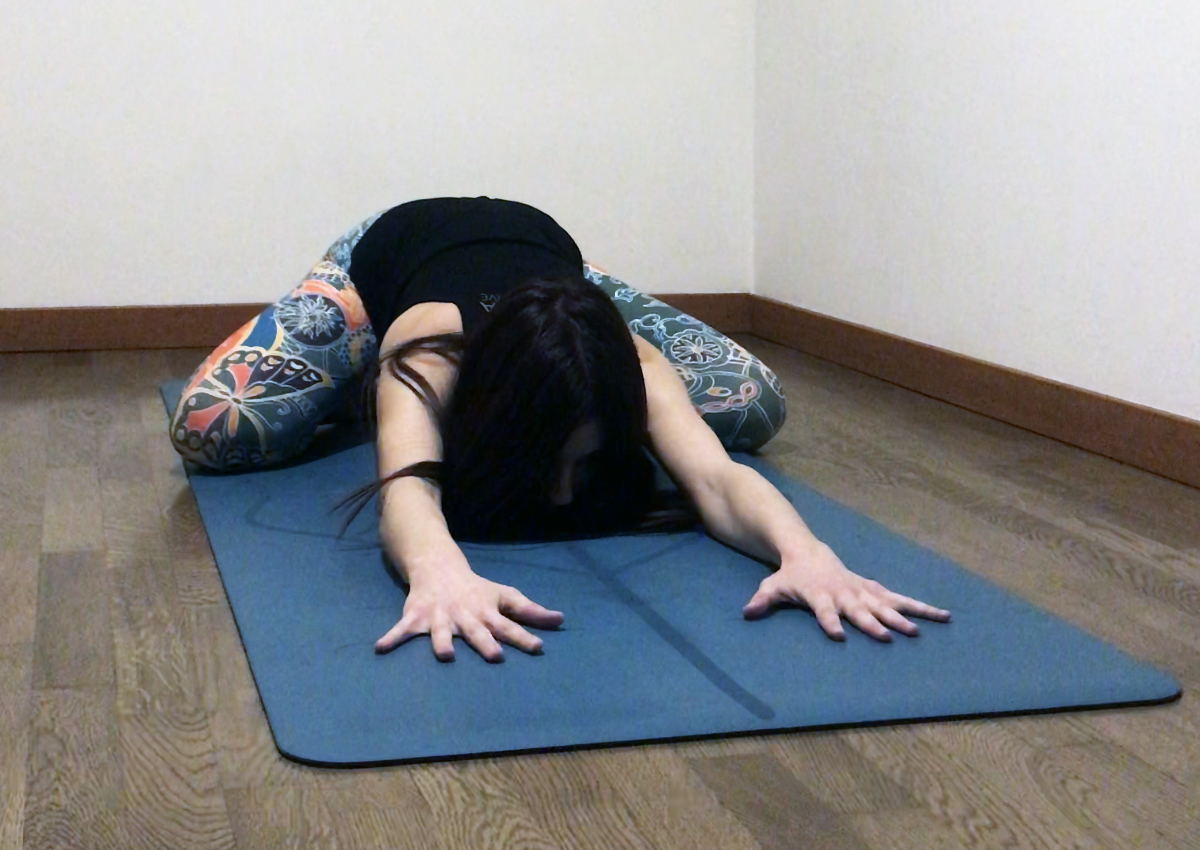
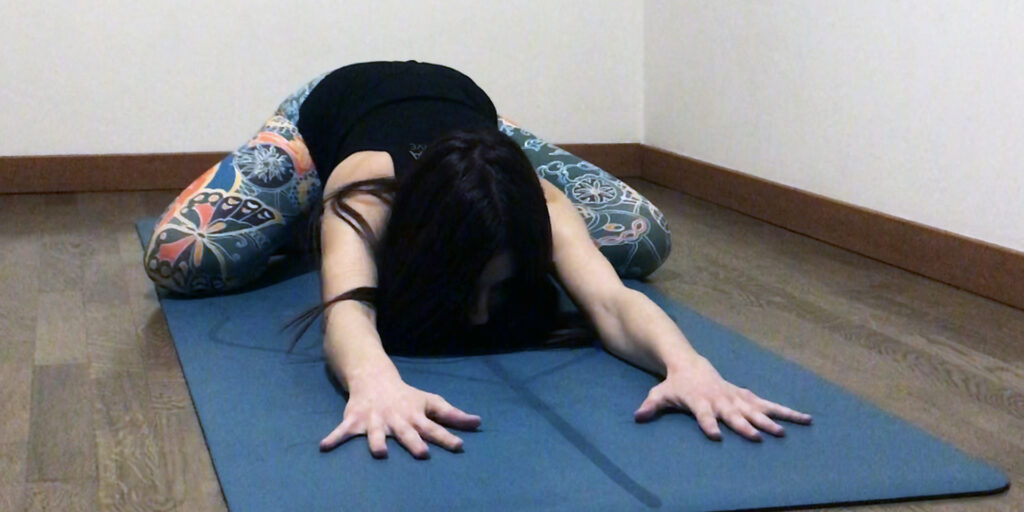
The benefits of yoga before going to sleep
A slow and gentle yoga practice before going to bed helps prepare the body and mind for relaxation and rest.
Gentle yoga and slow breathing exercises, in fact, have proven to be very effective in activating the parasympathetic nervous system which prevails over stress and brings the body into “rest mode”, lowering heart rate and blood pressure.
Practicing yoga before going to sleep has several benefits:
- reduces the symptoms of insomnia
- improves the quality of sleep
- improve digestion
- promotes awareness
- lowers stress levels
5 yoga poses to sleep better
Practicing this yoga routine before bed will help you gently stretch and relax tight muscles and shift your body into rest mode by activating your parasympathetic nervous system.
Start by getting ready for bed and turning off the lights, you can practice these poses right in bed, so you won’t need to get up and move around once you’ve completed the routine. Try to keep your gaze relaxed, or you can keep your eyes closed throughout the sequence.
1. Sukhasana
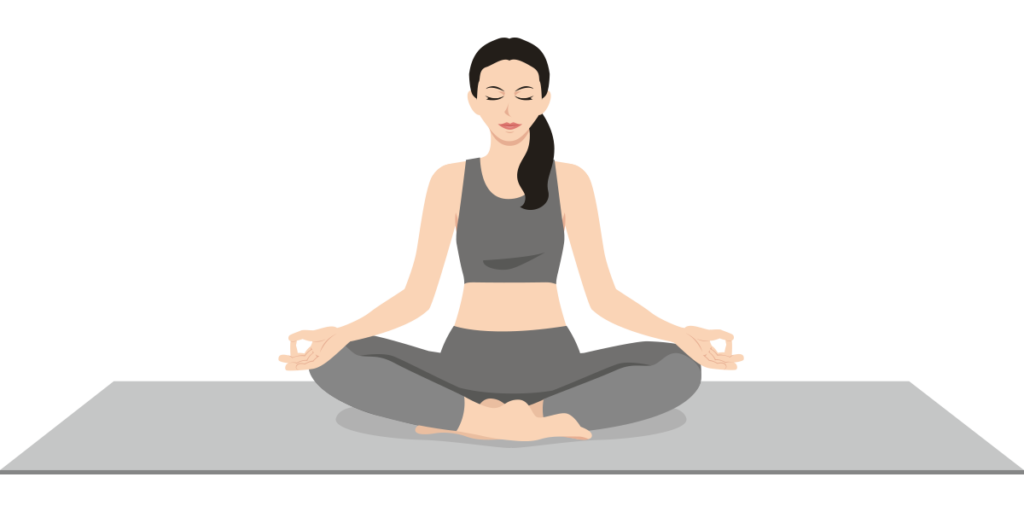
Start in a comfortable sitting position with your legs crossed, with your hands resting on your knees and palms facing up. You can hold your hands in Jnana mudra, one of the most common mudras in meditation, in which the tips of the index finger and thumb touch each other while the other three fingers remain extended but relaxed.
Keep your spine straight and focus on your natural breathing, try to make it long and deep and as thoughts come into your mind observe them without judgment and let them slip away. Stay here for a few minutes.
This pose will help you calm your mind and enter a state of serenity and tranquility, reducing anxiety and stress.
If the position is uncomfortable you can sit on a cushion or blanket.
2. Balasana or child’s pose
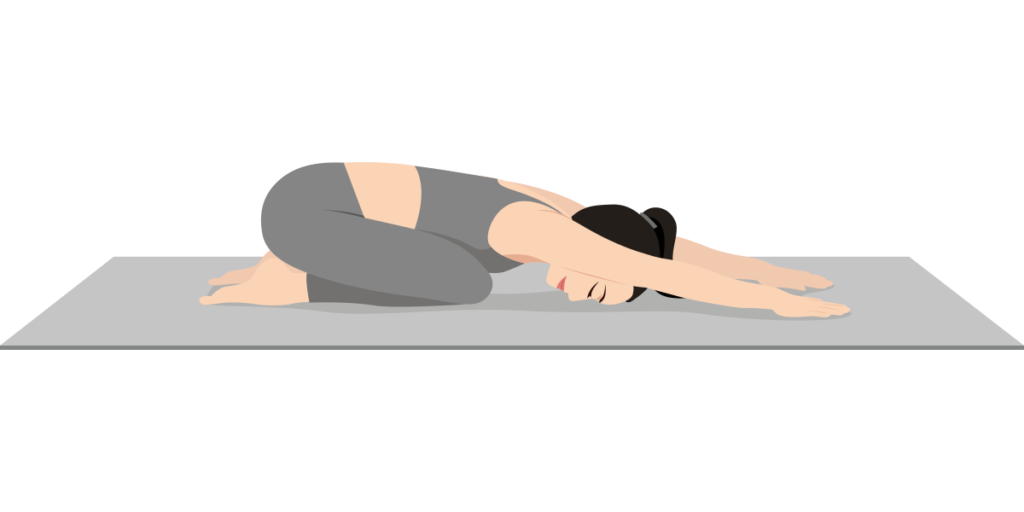
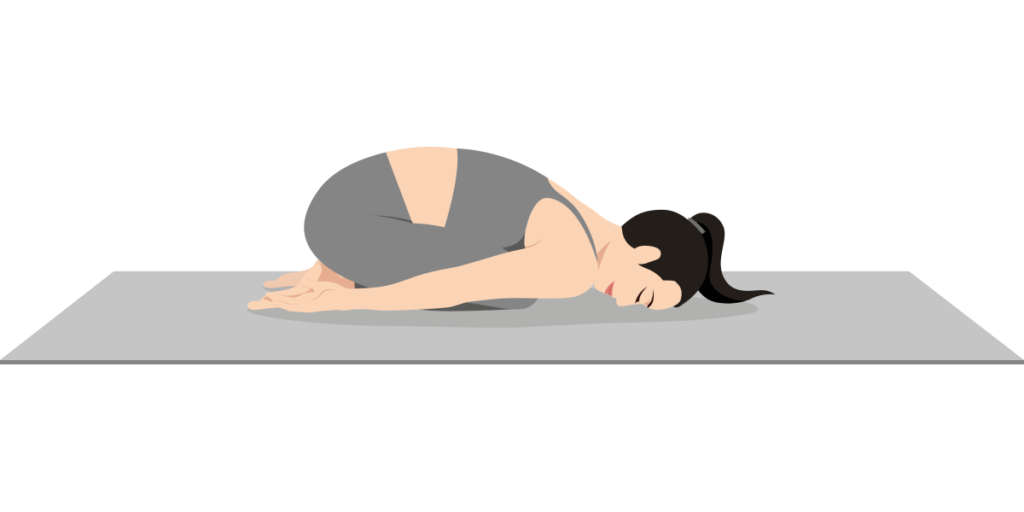
Get on your knees with your buttocks on your heels, separate your knees bringing them in line with your hips, move your torso forward until your forehead rests on the ground and your chest rests on your knees. You can place a pillow between your knees so that your forehead and chest are on the pillow.
The arms can remain extended forward or back along the sides with the palms of the hands facing upwards.
Maintain this position for a few minutes, always paying attention to your breathing and releasing all the tension in your body.
3. Eye of the needle pose
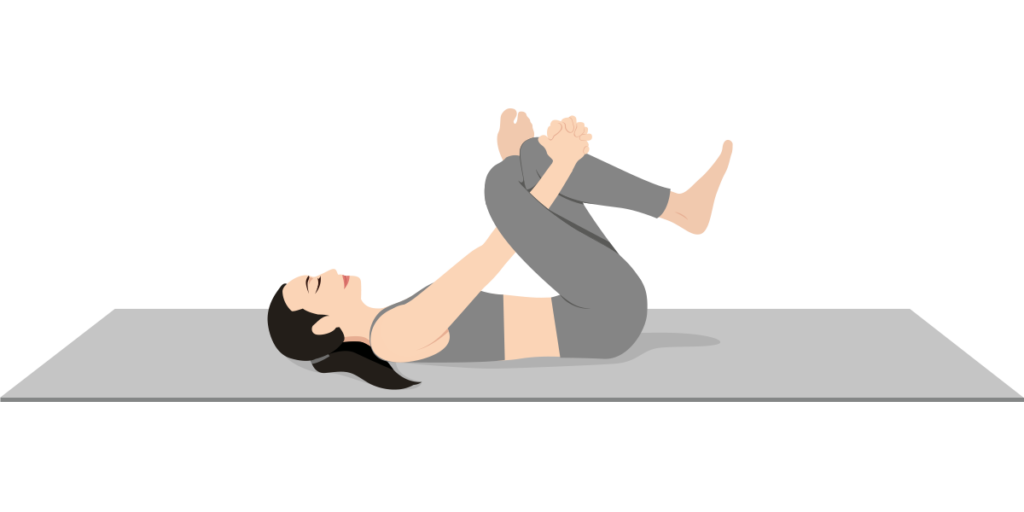
Slowly lift yourself from balasana and gently move to a lying position on your back, bend your knees keeping the soles of your feet on the ground. Bring your right knee to your chest, with a hip opening movement, place your right ankle on your left thigh, near your knee. Grab your left thigh with both hands or grab your left leg below the knee, using your arms to bring your knee closer to your chest creating a slight stretch.
Breathe in this position for a few minutes and then repeat on the other side.
4. Supine spinal twist
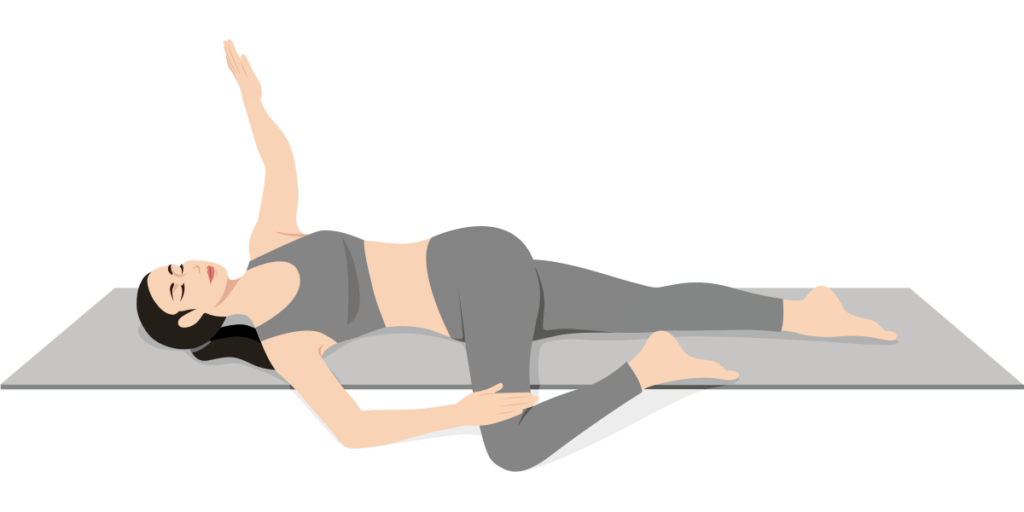
From the eye of the needle position, slowly extend your legs, bring your right knee to your chest, extend your right arm to the right with the palm of your hand facing upwards and keep your left hand on your right knee, slowly accompanying it towards the left and towards floor or bed. You can look at the ceiling or turn your head towards your outstretched arm.
If you feel the position is too intense, you can place a pillow under your bent knee to reduce the intensity.
Maintain this position for a few minutes and then gently return to the center, extend the right leg and repeat with the left leg.
A variation is to perform the position with both knees bent and arms open and extended at shoulder height, slowly sliding the knees first to the left and then to the right, rotating the head in the opposite direction to the knees and always maintaining the position for a few minutes.
5. Supta Baddha Konasana
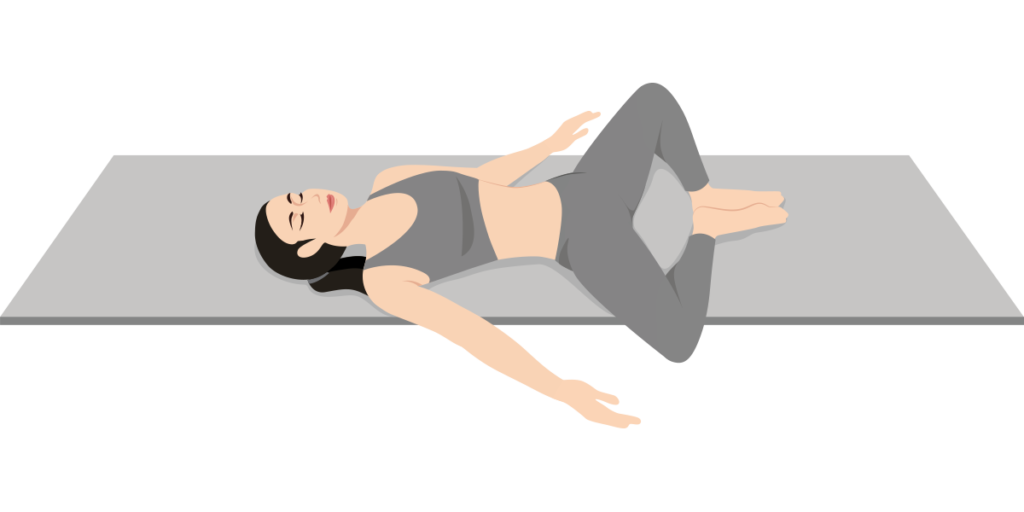
After the twists, return with your legs extended, bend your knees, keeping the soles of your feet on the ground and gently open them outwards, bringing the soles of your feet into contact with each other without actively pressing them. The knees are relaxed towards the floor.
You can place a pillow under your head and under your back, and if you feel too much pressure on your knees, you can add pillows under your knees to relieve the sensation.
Extend your arms along your body with your palms facing up.
Breathe deeply in this position for a few minutes.
Once you have completed this yoga sequence, slowly and gently move into your favorite sleeping position. Observe your slow, natural breathing and relax your body. You may feel tension in some areas, such as your shoulders or the muscles around your eyes, make sure all these areas are relaxed and allow yourself to drift off to sleep.
Practice this yoga sequence in bed every night before sleep and notice how your sleep quality, physical health, and emotional well-being improve day after day.
Do you practice yoga before going to sleep? Tell me your experience and let me know in the comments what you think of this sequence I proposed!